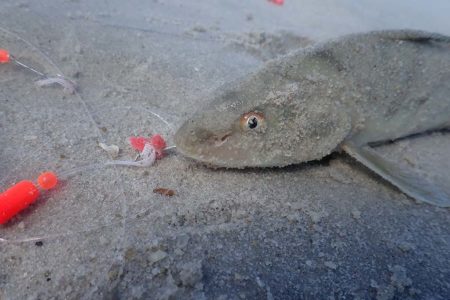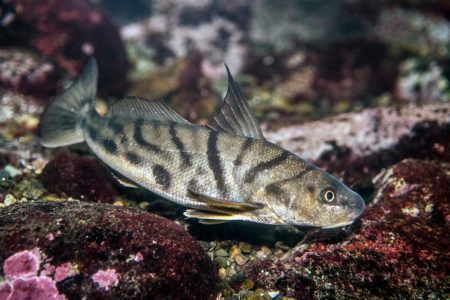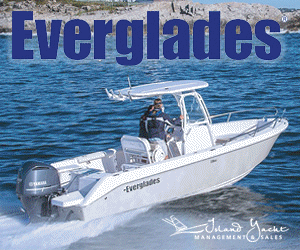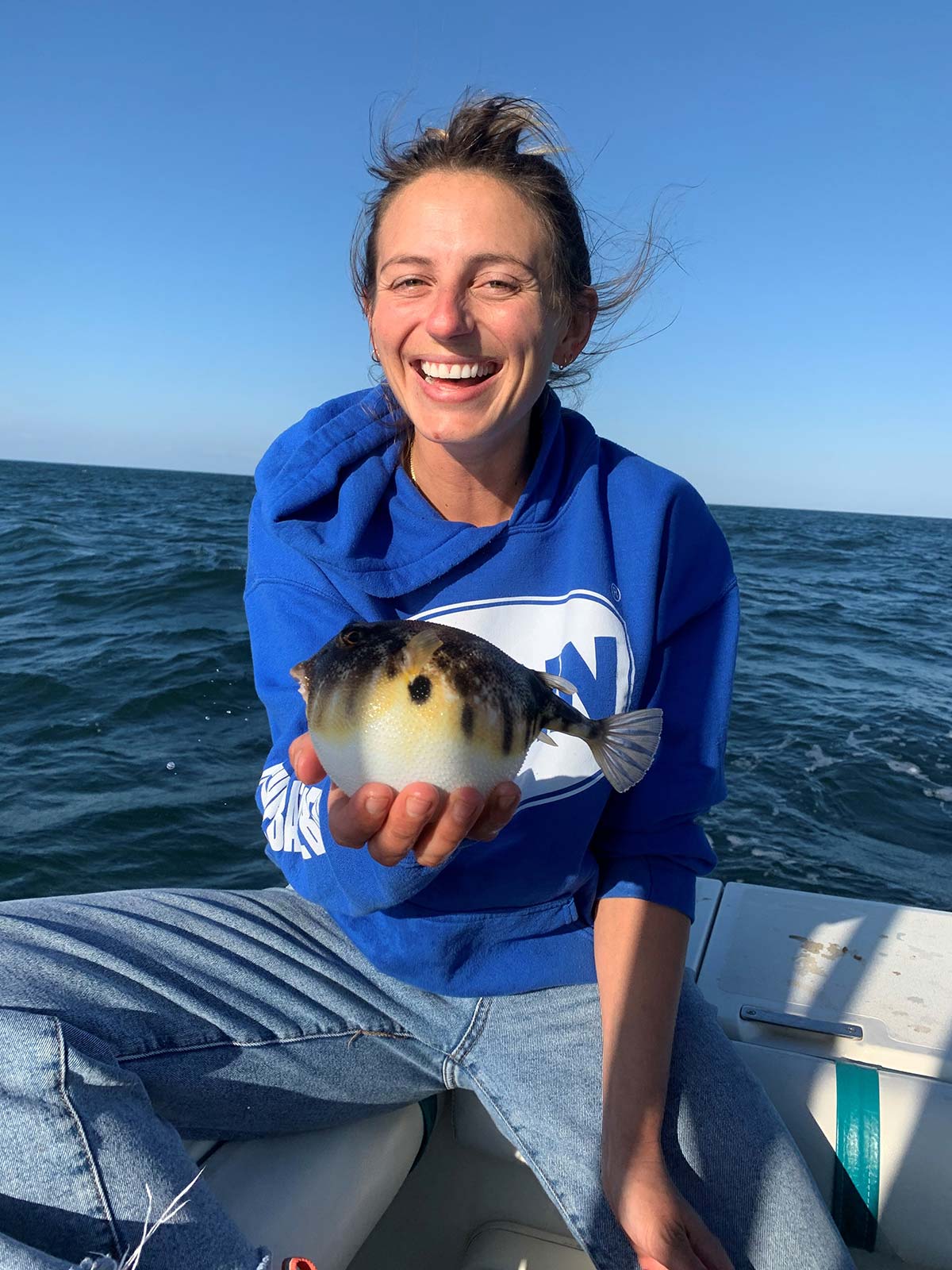
Perhaps they aren’t going to win any beauty pageant, but what they lack in looks are made up in taste.
It’s the only species of fish I know that at a time during the 1960s, you could drop a line just about anywhere there was saltwater in September or October with a little piece of anything, including a piece of Boars Head ham or any deli meat or cheese on a small hook and catch them all day long for goodness sake. What are they? I’ll give you a hint. Back in the 60s, they were so abundant and considered such pests. Back in those days, you rarely got past them while fishing for flounder or fluke and labeled them trash fish. Today they are considered a delicacy going between $15 and $19 a pound at the fish or large supermarkets. They are none other than northern puffers, better known as blowfish, which, when skinned, their tails are labeled “chicken of the sea,” and in Moriches Bay during the fall run, they are once again abundant with a solid sprinkling of northern whiting (kingfish) to keep rods bending and coolers full of some of the tastiest delicacy the Northeast has to offer.
The Weak And The Ugly
Perhaps they aren’t going to win a beauty pageant, but what they lack in looks are made up in taste. After all, if a consumer is willing to pay $19 for a pound of locally-caught fish, it has to taste pretty darn good. If you are unfamiliar with the northern puffers, they are scientifically called Spheroids Maculates. They spend their winters offshore in the warmer waters of the Gulf Stream, while some choose to spend their winter months in the southern waters off the South Carolina coast. Whichever winter resort they decide to travel to, they return to Long Island waters by mid-May and depart by mid-October when water temps become too cool for them to stick around.
Their diets are simple as they will feed on anything they can get their mouths around. They average less than a pound but can reach as much as 3 pounds. If you are looking for a tussle, you better look elsewhere, as they aren’t prize fighters. Actually, they aren’t fighters at all. They are often found in shallow sandy or sand/mud bottom. Quite simply, blowfish are easily targeted on the same grounds as fluke and flounder.
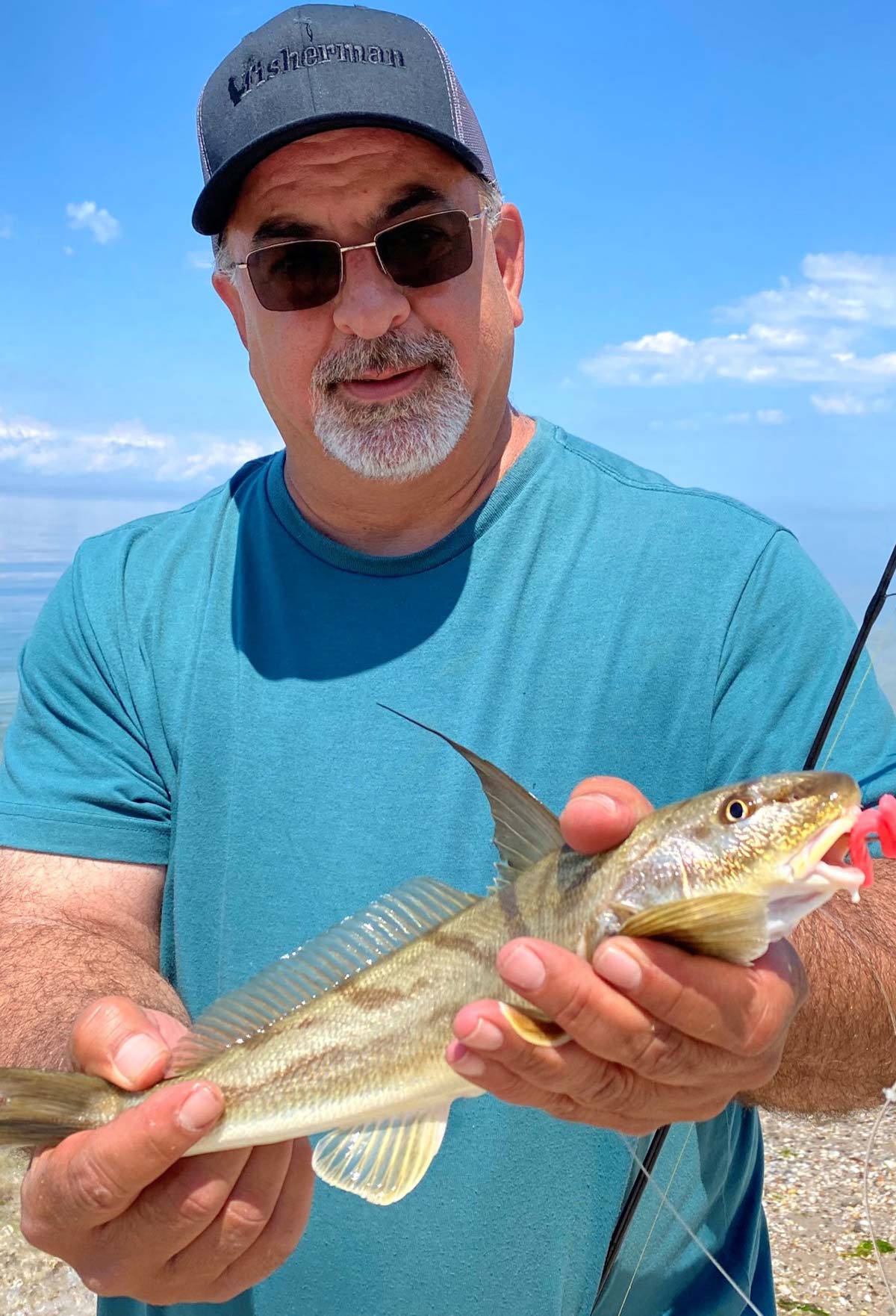
Anchor, Rig, And Fish
Anchoring is the best method to catch these tasty treats. In addition, just about any pier or dock that juts out into the waters of the South Shore bays should be chock full of tasty puffers, which makes this fishery ideal for those looking to entertain the kids.
Gear and bait are pretty straightforward as a simple tandem-tied rig with a sinker able to hold the bottom. The only concern on the rig is the use of long shank hooks. The reason is that blowfish have bony mouths with a strong bite, which will slice the leader on a short shank hook like scissors. Besides, blowfish tend to just keep chewing away, so even if they don’t sear your leader on the first try, more than likely, they will be deep hooked, which is not that simple to remove from their small mouths. The old classic flounder hooks of number 9 or 10 Mustad Chestertown fit the bill ideally. However, another solid alternative is the Mustad Beak number 6 or 8 hooks. These are extra strong and reliably sharp hooks that will be capable of managing the chisel mouths of a puffer as well as having the strength to hold on to a 30-pound striper should one come your way.
As for bait, it’s a matter of preference. The reason is blowfish are not picky and usually eat whatever is put in front of them. When choosing baits, keep in mind that kingfish, which we’ll get acquainted with in a few moments, roam the same waters as the puffers but are a bit fussier when it comes to eating. Therefore I would strongly suggest sandworms, clams, and squid as the top choices to keep both species content. When blowfish dominate the area, the key is to employ very small pieces of bait, say about the size of your pinky nail. As for artificial bait, Berkley’s Gulp Alive sandworms chopped into 1/4-inch nuggets work just as well as the real ones and will dupe the kingfish as well. Fishbites E-Z Strips are another great option. Just cut them into small pieces and fish the same way you would any other bait.
Weak But Tough
While the blowfish’s willingness to be caught would win any award for simplicity, the tables turn at the cleaning station as cleaning the little beast can get interesting. It’s a tough job, and they will scorch the skin off your hands. This is why it is very important to always wear gloves when skinning them. Their skin is about 10 times courser than sandpaper. A good pair of rubber dish cleaning gloves and a good sharp knife to cut through the bone will make the task much easier.
The easiest way to clean blowfish is to cut them from the top right behind the gills and cut them right down to the bottom skin, then turn your knife away from you and run the knife right down the fish, and the skin will peel right off. Just rotate your knife as you pull it to the back while holding the head, and the skin comes right off, and you end up with what we call a chicken leg. It looks just like a chicken leg, all nice and clean. Using this procedure will have a pile of puffers cleaned in no time and on the dinner table that night.
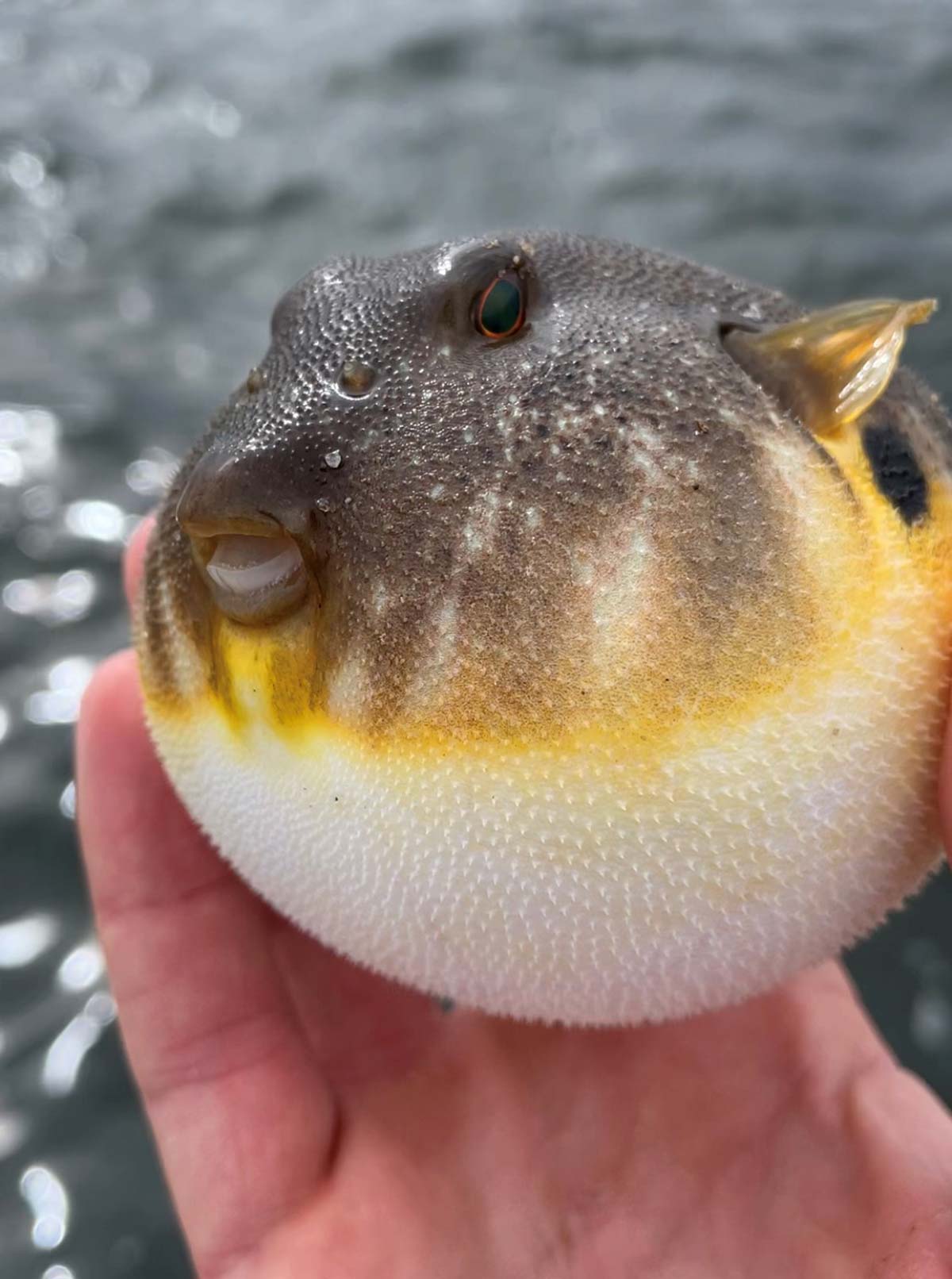
Kingfish Too
Moving on to kingfish, they generally inhabit the same waters as the puffers. However, unlike blowfish, they pack a punch. Besides being good-looking little powerhouses, they provide great table fare and are a heck of a lot of fun to catch. Therefore, if you’re looking to mix it up a bit and put a few in the cooler, you may want to fine-tune a thing or two to keep you in the game.
During the summer and fall, most of the Moriches docks and piers will produce kingfish as these areas provide the ideal elements of sandy mud bottoms located in 4 to 8 feet of water with plenty of bivalves and tubeworms to keep them well fed. Always on the move in search of food, you don’t have to be overly concerned about where to fish or how far to cast, providing the bottom of the area you are fishing does not consist of muck or dark mud. These spots support very little, if any, life, and kingfish, as well as most any other species, including blowfish, will avoid such areas.
| TIDES NO, WINDS YES |
| Tide is not that much of a factor in the back bays of Moriches when it comes to these two bottom dwellers, as both sides of the tide will produce. However, wind velocity and direction can affect the quality of the fishing. Try fishing in the early mornings before the winds pick up or on days when the winds are under 10 knots. During the summer months, a south-westerly breeze dominates the south shore on most afternoons, usually creating choppy murky waters, which often leads to a slow bite. However, the wind usually calms down towards sunset, which can be a fine time to nail a few kingfish. |
For boatmen looking to put some Northern whiting in the box, the area south of buoy 14 leading to Great Gun Beach is often loaded with kingfish, as is the area just east of the Great Gun Marina in 15 to 20 feet of water. South of buoy 15 in 8 feet of water is usually loaded with puffers. However, there are times when you can break through for a few kings. I would concentrate around the Great Gun area as there seem to be less blowfish in that area the past couple of seasons. Just like blowfish, it is relevant to anchor. Chumming with a couple of pots of frozen clam logs will certainly draw in the kingfish, but plenty of puffers as well. Therefore the choice is yours. One thing is for sure, keep a chum pot in the water for an hour or two where the blowfish are, and those metal screens will produce not one piece of spat on them. Something to think about when you want to clean the pot of old clam glob you may have on it from a previous porgy or sea bass trip.
Keep It Light And Sweet
Since kingfish won’t win any trophy for size, ultra-light tackle is the most enjoyable. Spinning or bait casters in the 6 to 8-pound class would be just fine. As for the terminal gear, many different rigs will catch kingfish; however, I suggest using a tandem rig as you would with blowfish, with the same size hooks and style hooks, as kingfish also have small mouths. Sinkers round out the terminal end with 1 or 2 ounces more than sufficient in the back bays as there is little current to be a concerning factor.
So whether it’s your favorite dock, beach, or a quiet day anchored in a peaceful piece of back bay, kingfish, and blowfish are sure to keep you on your toes. Remember that right now there are no restrictions on the size or limit of these fish. However, good action doesn’t mean you have to fill a cooler. Please practice self-restraint and be conservative so the fishery is still plentiful for future generations.
